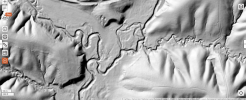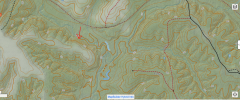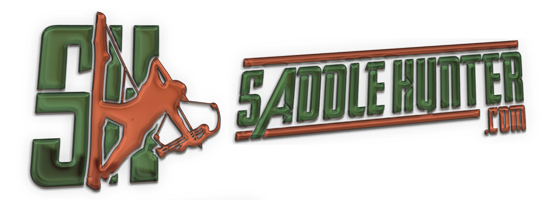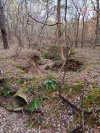I am curious how everyone approaches map scouting a new piece of ground. Improvements in mapping tech along with moving into more mountain hunting has certainly changed my approach. What are the key things you are looking for when it comes to new ground before putting boots on it and what mapping tools do you prefer to use in what order?
-
The SH Membership has gone live. Only SH Members have access to post in the classifieds. All members can view the classifieds. Starting in 2020 only SH Members will be admitted to the annual hunting contest. Current members will need to follow these steps to upgrade: 1. Click on your username 2. Click on Account upgrades 3. Choose SH Member and purchase.
-
We've been working hard the past few weeks to come up with some big changes to our vendor policies to meet the changing needs of our community. Please see the new vendor rules here: Vendor Access Area Rules
You are using an out of date browser. It may not display this or other websites correctly.
You should upgrade or use an alternative browser.
You should upgrade or use an alternative browser.
Map scouting a new area
- Thread starter BTaylor
- Start date
Assuming public areas.
1. Mark boundaries. Including parking areas.
2. Mark all paved roads, use a specific color. Look for areas that are hard to access, no parking, long walks and such.
3. Mark all farm roads, non vehicle access roads, use another color.
4. Mark all walking trails, old access roads, horse trails and such, use another color. These show up sometimes on old style topo maps with double line markings.
(These items are necessary because they may not show up on all map layers such as shaded relief.)
5. Mark all water sources.
6. Since I hunt funnels, I look for ditches, both high and low.

7. Then I look for steep ridges or hill side that will restrict deer movement. You will need topo's with 10 foot lines.

Currently using Hunt Stand (best aerial photo's) and the free version of Cal Topo (best topo and best shaded relief maps)
1. Mark boundaries. Including parking areas.
2. Mark all paved roads, use a specific color. Look for areas that are hard to access, no parking, long walks and such.
3. Mark all farm roads, non vehicle access roads, use another color.
4. Mark all walking trails, old access roads, horse trails and such, use another color. These show up sometimes on old style topo maps with double line markings.
(These items are necessary because they may not show up on all map layers such as shaded relief.)
5. Mark all water sources.
6. Since I hunt funnels, I look for ditches, both high and low.

7. Then I look for steep ridges or hill side that will restrict deer movement. You will need topo's with 10 foot lines.

Currently using Hunt Stand (best aerial photo's) and the free version of Cal Topo (best topo and best shaded relief maps)
elk yinzer
Well-Known Member
I've shifted my strategy quite a bit over the years.
Peak map scouting era for me is over, everyone does it now, and most of them hone in on the same features. The days of finding a sick funnel or saddle from a map and expecting all the other dudes not to see that are over. That era was pretty sweet when you had to work for good maps. The barrier to entry has been lowered, and pressure has shifted accordingly.
Now I pretty much am looking at access and people tendencies and working from there almost exclusively boots on the ground, with some mapping to fill in blanks or solve problems.
Peak map scouting era for me is over, everyone does it now, and most of them hone in on the same features. The days of finding a sick funnel or saddle from a map and expecting all the other dudes not to see that are over. That era was pretty sweet when you had to work for good maps. The barrier to entry has been lowered, and pressure has shifted accordingly.
Now I pretty much am looking at access and people tendencies and working from there almost exclusively boots on the ground, with some mapping to fill in blanks or solve problems.
First thing I need to see is a reliable water source. Then and only then do I start searching out for terrain features, types of trees, edge factors, parking and or access points.
Any mapping app will accurately map water, and most of the time I'm in OnX for that. But for the more detailed drill into an area I like CalTopo and Google Earth.
Any mapping app will accurately map water, and most of the time I'm in OnX for that. But for the more detailed drill into an area I like CalTopo and Google Earth.
I felt that way too before I started running cams on public out here in the mountain area. The only cam I have lost out there in the past 2 season was in an obvious saddle but not really close to the road at all. It was the best hidden of the cams I hung and it still got snagged. 3 cams were in just as glaringly obvious spots and WAY close to the road and werent bothered. One cam had one guy walk by once all season. The other two cams didnt get a person all season. No idea why cause there is a good bit of pressure on the place. Nothing like what yall have to deal with pressure wise but still a fair bit.I've shifted my strategy quite a bit over the years.
Peak map scouting era for me is over, everyone does it now, and most of them hone in on the same features. The days of finding a sick funnel or saddle from a map and expecting all the other dudes not to see that are over. That era was pretty sweet when you had to work for good maps. The barrier to entry has been lowered, and pressure has shifted accordingly.
Now I pretty much am looking at access and people tendencies and working from there almost exclusively boots on the ground, with some mapping to fill in blanks or solve problems.
Interesting. Sounds like water is a limiting factor in your area. I note where water sources are but seldom pay much attention to them as far as scouting goes because the one thing we have is plenty of water.First thing I need to see is a reliable water source. Then and only then do I start searching out for terrain features, types of trees, edge factors, parking and or access points.
Any mapping app will accurately map water, and most of the time I'm in OnX for that. But for the more detailed drill into an area I like CalTopo and Google Earth.
Curious what kind of ground your are hunting, flat, rolling or mountains? Mixed ag or large tracts of timber? Or doesnt matter?I find that land cover influences deer movement more than all but the most significant topo features. I now look at the aerial photos first and just look for breaks in the green monotony as my first clues.
- Joined
- Jan 17, 2019
- Messages
- 6,945
Curious what kind of ground your are hunting, flat, rolling or mountains? Mixed ag or large tracts of timber? Or doesnt matter?
large tracts, public, mountains/hills
Are you focusing more on hard edges or soft edges?large tracts, public, mountains/hills
- Joined
- Mar 18, 2023
- Messages
- 452
I’ve started turning on the timber cut feature on my maps and hunting the edges. Most people don’t want to deal with the thick growth left from those cuts. I’ve started noticing a lot of scrape lines following those edges as well.
I haven’t sealed the deal yet hunting this way but there has been an increase in buck activity on cams and eyes on.
I haven’t sealed the deal yet hunting this way but there has been an increase in buck activity on cams and eyes on.
- Joined
- Jan 17, 2019
- Messages
- 6,945
Are you focusing more on hard edges or soft edges?
Both equally. Anything that looks different from the air is often worth checking out.
The timber cut tool can be super helpful, esp when combined with historical aerial photos.I’ve started turning on the timber cut feature on my maps and hunting the edges. Most people don’t want to deal with the thick growth left from those cuts. I’ve started noticing a lot of scrape lines following those edges as well.
I haven’t sealed the deal yet hunting this way but there has been an increase in buck activity on cams and eyes on.
BrowningGuy88
Member
- Joined
- Jan 30, 2025
- Messages
- 65
What app offers the timber cut tool?
Sent from my iPhone using Tapatalk
Sent from my iPhone using Tapatalk
Sunshine
Active Member
I'm in Florida.
So it's mainly,
1. "Do I think I can I walk around that swamp?"
2. "Do I think I can walk through that swamp?"
3. "Could I get a kayak into that swamp?"
4. "Guess I'm swimming through that swamp."
So it's mainly,
1. "Do I think I can I walk around that swamp?"
2. "Do I think I can walk through that swamp?"
3. "Could I get a kayak into that swamp?"
4. "Guess I'm swimming through that swamp."
Until recently that is how I have always approached new ground too. It is still a significant piece of the puzzle but I have been shifting away from it being my starting point. My shift is more a result of the last two years letting cams soak in spots, most of which are not standard spots most people talk about. My cam results support the idea that, at least in this particular area, bucks of all age classes are following 2 patterns. Pre-season they are holding to a fairly small core area and show on cams pretty regular but then shift into a travelling pattern as they shift into and through the rut, including late rut. That has led me to starting the map scouting process using lidar with the shaded relief and the sun/shade tool. I am starting with a much broader look at an area to try to decipher what I think are the most likely long range travel lines as it relates to topography. Then I am switching to aerials to see how land cover may or may not associate with the topography as I am seeing it. I initially drop pins on lidar and then may adjust them based on aerial. Then I try to go get boots on the areas around pins to see how it all ties together in person. This area is not a high density area for deer at least not like the other areas of the state I am used to hunting. The more time I spend map scouting and then in person scouting it the more this strategy of trying to find those not obvious spots that other miss or overlook entirely makes sense to me. The flip side is trying to hunt a deer where he may only show in daylight once or twice over a few day period the entire season has been and is a mental hurdle.Both equally. Anything that looks different from the air is often worth checking out.
Spartan Forge shows cuts on forest service ground.What app offers the timber cut tool?
Sent from my iPhone using Tapatalk
- Joined
- Jun 5, 2020
- Messages
- 2,093
You need to find his core area, assuming you’ve located or have picture evidence of one, super mature dominant buck, now you need to expand your search from the high count, more probable, multiple deer encounter locations to that bucks one “special spot”, the older, more dominant of a buck, the more predictable he will be, just like us as we get older, he will move less, and always with more security cover, but with more thought behind it, his routine is more set in stone, it’s worked for years and they hate change. Here’s one I’m betting most have not experienced, but I have, and only on the biggest of bucks I have killed or chased during a season, and I‘ve had it happen multiple times, once I have located what I assume is my target bucks core area, and if there is any cell service at all I’m looking for a good cam spot, high in a tree to not spook him or other game.. I can’t tell you the times I’ve gotten that buck the first night on camera.. if not the first night usually by the second, almost like they are pissed off and wondering what the heck I’m doing in their spot, I’m about positive I had one buck follow my tracks out one night after I hung 3 or 4 cams in and near his core area, he tripped half my cameras the first night, then he laid low for a week and settled back in to his normal routine after that. When I have a big mature buck on camera doing stuff like that, and can monitor him with cell cams and get real time intel on what he’s doing a couple times a week, that deer will have all he can do to stay alive because my degree of confidence in killing him will be off the charts and I will not stop until I do, that is how you get over the mental hurdle of grinding for one buck, after you’ve had it happen just once it gets easier the more times you do it, and becomes addicting, yes I will hammer a worthy volunteer as well if one happens to show unexpectedly, but the mental battle of locating, pursuing, and getting inside the head of just one beast of the woods buck and going after him is a rush like nothing else, and it also involves lots of dry hunts, nothing burgers are the norm, but it only takes about one minute for all that to change and have success happen, when it does it makes all the dry hunts worth it. The year I killed my personal best on public land, I had just over one year of trail cam pics of him, I spent half that season not aggressively hunting any other areas and basically just scouting when I did go into the woods, waiting for just him and staying out of there (core area) until I thought he was ready to be hunted, I seen just one buck that entire season, him, and maybe 3 or 4 other deer all season in total, that’s it. I did 4 all day saddle hunts (same tree) from dark to dark during a 5 day period just waiting for that one buck and only caught the glimpse of one deer the entire 4 days in a tree. Knowing the deer you are after, with lots of pre and post season scouting, gives you the confidence to endure the small odds of having it actually work, fresh, real time intel, cell cams, make all the difference!The flip side is trying to hunt a deer where he may only show in daylight once or twice over a few day period the entire season has been and is a mental hurdle.
On the WMA I am referring too, maybe 20% of the cam locations the last 2 years have cell signal. I dont have any cell cams because of that. That's also a big part of the reason that I am focusing more on finding isolated pinch points or funnels within their rut travel loops. That I have seen in person and from cams, the doe groups are small (2-5) and spread out. The older a buck gets the better he is going to know when these different doe groups are going to be ready and he will be in those doe areas for a short window at that time. What I am trying to do is build as much inventory of data for as many of those type spots as possible so in time I can hopefully build up enough of those spots that every week of the entire rut period (pre-late) I will have a different locations with high odds of a mature deer showing. But I am also very much paying attention for when a cam lands in a bucks core area. This past year I had a cam in a bucks bedroom for the pre-season up to the rut. Pre-season and early season he was really regular but he got hard bumped by a thinning crew literally the morning of the first day I had the right conditions to hunt him. Went in at noon and found out the crew of 7 guys had spent the whole morning in his core bedding area running chainsaws. He did finally come back but it was a few weeks later and he was nowhere near as regular because I think he was making his rut travel loops. In essence, I am looking for those opportunities to do just what you are talking about and focus on one particular deer but I am also trying to use my cams to help me build historical data that I can hopefully use to be more efficient with my hunting time by hunting locations in the timeframes where historical data shows a mature buck is present.You need to find his core area, assuming you’ve located or have picture evidence of one, super mature dominant buck, now you need to expand your search from the high count, more probable, multiple deer encounter locations to that bucks one “special spot”, the older, more dominant of a buck, the more predictable he will be, just like us as we get older, he will move less, and always with more security cover, but with more thought behind it, his routine is more set in stone, it’s worked for years and they hate change. Here’s one I’m betting most have not experienced, but I have, and only on the biggest of bucks I have killed or chased during a season, and I‘ve had it happen multiple times, once I have located what I assume is my target bucks core area, and if there is any cell service at all I’m looking for a good cam spot, high in a tree to not spook him or other game.. I can’t tell you the times I’ve gotten that buck the first night on camera.. if not the first night usually by the second, almost like they are pissed off and wondering what the heck I’m doing in their spot, I’m about positive I had one buck follow my tracks out one night after I hung 3 or 4 cams in and near his core area, he tripped half my cameras the first night, then he laid low for a week and settled back in to his normal routine after that. When I have a big mature buck on camera doing stuff like that, and can monitor him with cell cams and get real time intel on what he’s doing a couple times a week, that deer will have all he can do to stay alive because my degree of confidence in killing him will be off the charts and I will not stop until I do, that is how you get over the mental hurdle of grinding for one buck, after you’ve had it happen just once it gets easier the more times you do it, and becomes addicting, yes I will hammer a worthy volunteer as well if one happens to show unexpectedly, but the mental battle of locating, pursuing, and getting inside the head of just one beast of the woods buck and going after him is a rush like nothing else, and it also involves lots of dry hunts, nothing burgers are the norm, but it only takes about one minute for all that to change and have success happen, when it does it makes all the dry hunts worth it. The year I killed my personal best on public land, I had just over one year of trail cam pics of him, I spent half that season not aggressively hunting any other areas and basically just scouting when I did go into the woods, waiting for just him and staying out of there (core area) until I thought he was ready to be hunted, I seen just one buck that entire season, him, and maybe 3 or 4 other deer all season in total, that’s it. I did 4 all day saddle hunts (same tree) from dark to dark during a 5 day period just waiting for that one buck and only caught the glimpse of one deer the entire 4 days in a tree. Knowing the deer you are after, with lots of pre and post season scouting, gives you the confidence to endure the small odds of having it actually work, fresh, real time intel, cell cams, make all the difference!


